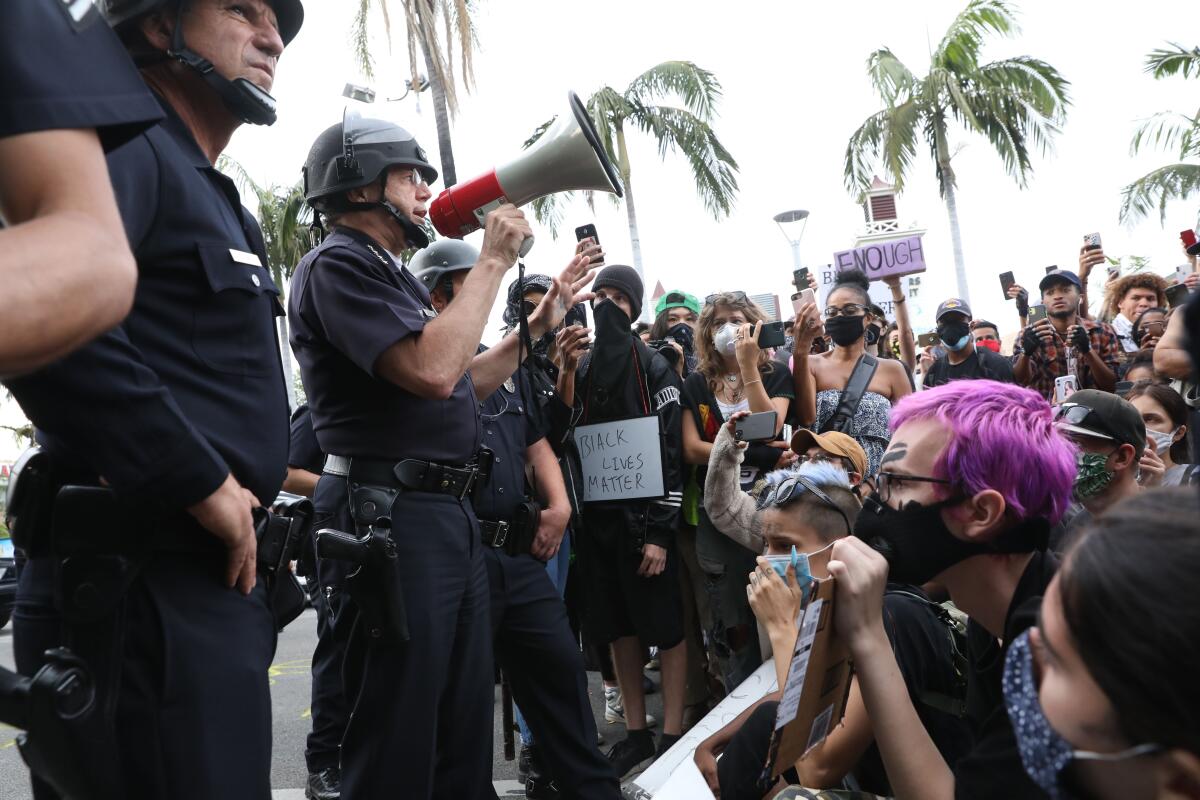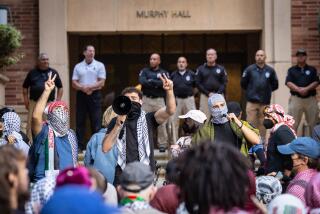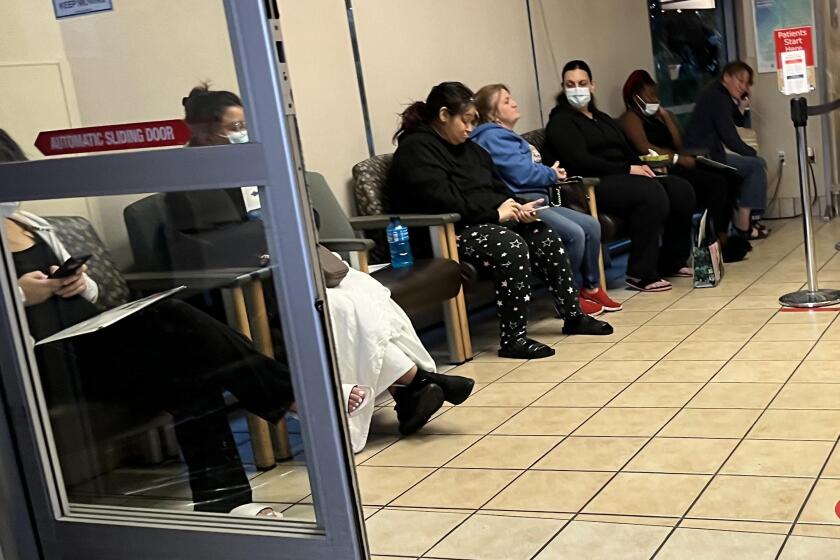Editorial: Too few checks on police dispersal orders

There is inherent tension between the right of people to gather to express their grievances and the power and duty of government to prevent such assemblies from decaying into violence and destruction. In 18th and 19th century Britain, sheriffs or mayors would stand near the crowd and literally read it the Riot Act, which warned people that if they didn’t go home or to their place of business within the hour, they would be arrested on felony charges, and might even be killed without any liability to the king’s officers.
Today in the U.S., police read dispersal orders, which are a version of the same thing and intended for the same purpose: to make everyone leave, ostensibly to prevent or break up a riot.
The Los Angeles Police Department’s record in reading the Riot Act and responsibly following through is spotty, to say the least. Dispersal orders did not prevent some protests following the 2020 killing of George Floyd by Minneapolis police from turning violent. That may be because the LAPD appears to have done an inadequate job of communicating its dispersal orders during those protests and others since, making it difficult for protesters to hear and understand them, and comply in a timely manner.
Also, as is the practice among many law enforcement agencies, the LAPD often issues its order and almost immediately boxes in, or “kettles,” the crowd, making compliance impossible. Then come arrests, or perhaps “less lethal” but still injurious rounds fired by officers into the crowd or at particular participants.
Were the declarations of unlawful assembly at recent protests that preceded the arrests and injuries justified?
Who knows? As Times staff writer Kevin Rector reported this week, the department has been woefully lax in explaining and even documenting its dispersal orders.
That leaves police with virtually unfettered and unreviewable power to override the right of people to assemble, as guaranteed by the 1st Amendment.
And it leaves the people of L.A. with two serious concerns. First, their police have to be more judicious — if not for the obvious reason that they can’t be permitted to disperse crowds with inadequate or undocumented reasons, then because, as noted in Rector’s story, improperly arresting people or preventing them from expressing themselves is expensive. Los Angeles residents have paid many millions of dollars over decades, in the form of settlements to protesters and others improperly arrested and injured by the LAPD.
The second concern has to do with some very basic facts on the ground: Sometimes protests do turn violent, and dispersal orders are indeed appropriate. Police are responsible for preventing and shutting down dangerous riots. Asking officers to always be able to distinguish between raucous protests that seem they could become dangerous at any moment and those that are just impassioned may be difficult in the heat of the moment — but we are right to demand the highest level of performance from those we hire to protect us with potentially deadly force.
And it’s certainly not too much to demand that police adequately document and justify their decisions. It’s one thing to make mistakes. It’s quite another to try covering them up in order to be able to make the same mistakes again and again.
More to Read
A cure for the common opinion
Get thought-provoking perspectives with our weekly newsletter.
You may occasionally receive promotional content from the Los Angeles Times.










